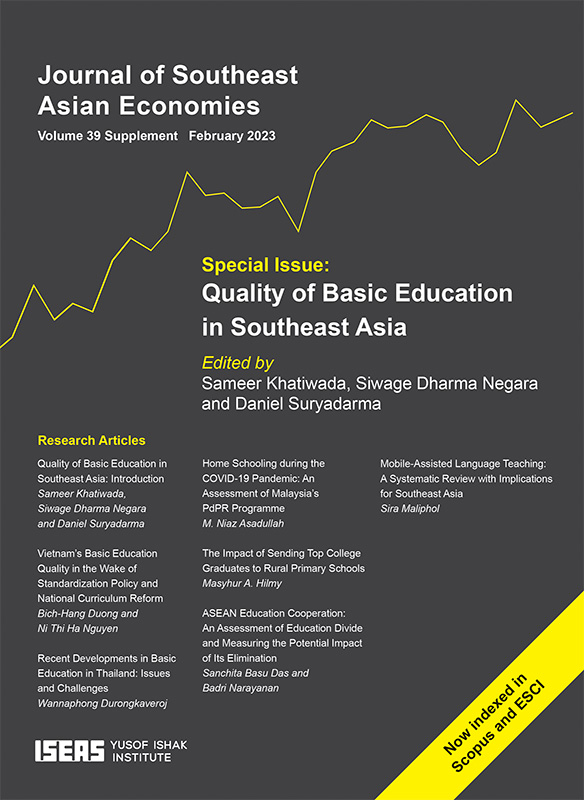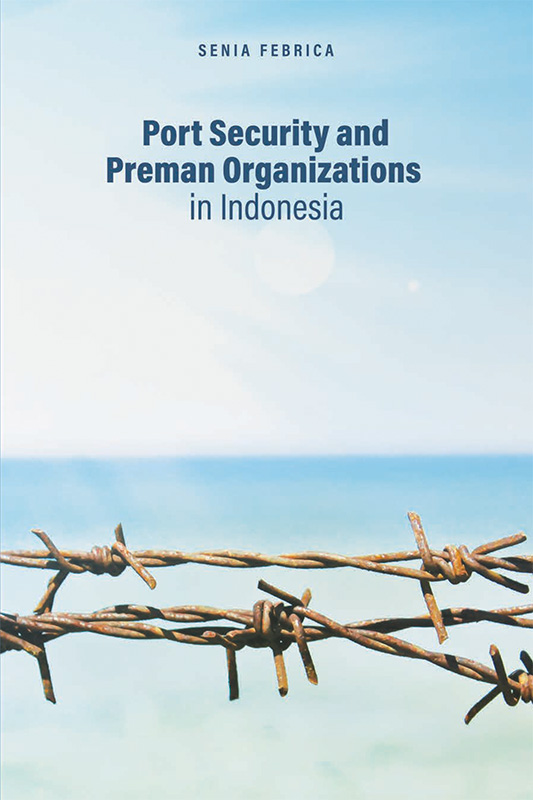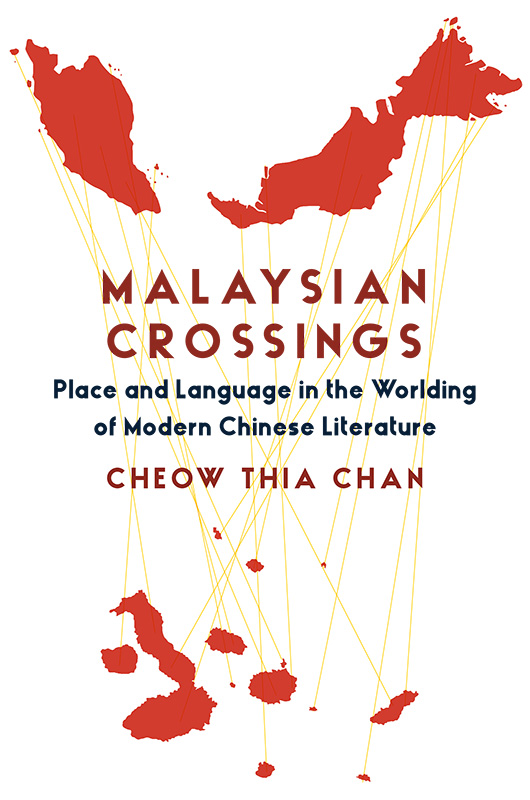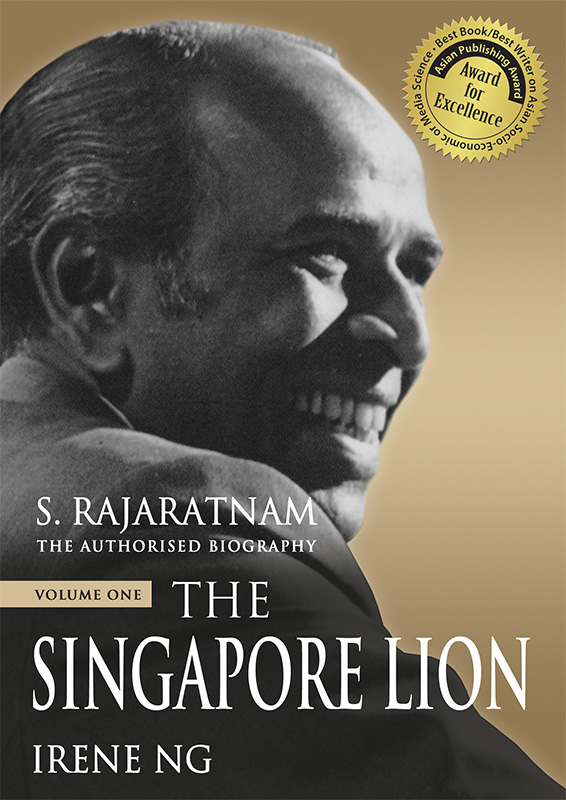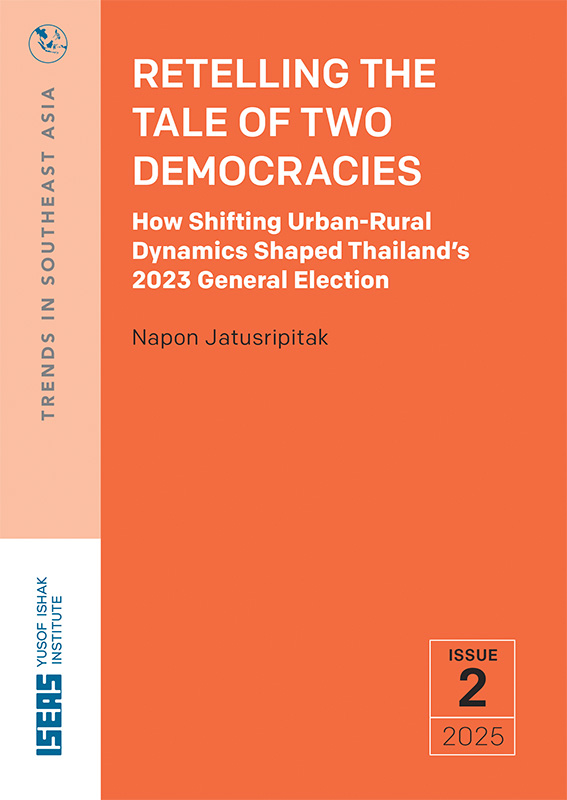Southeast Asian Affairs 2023
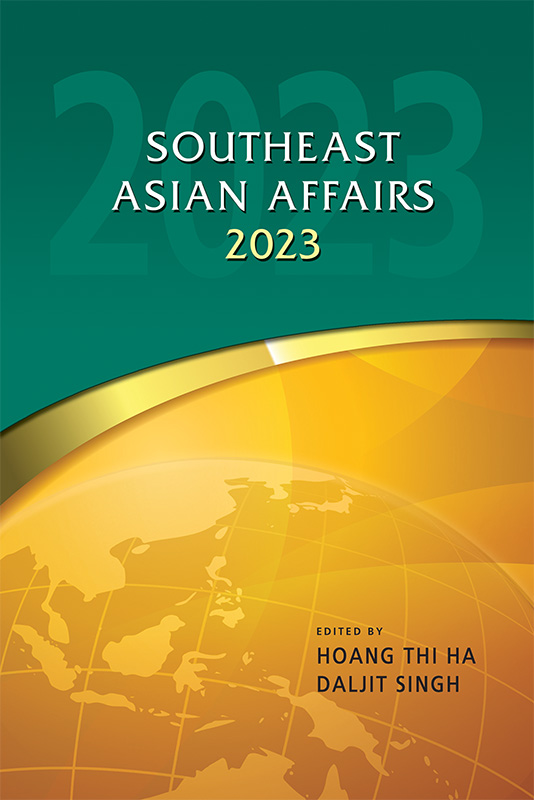
Date of publication:
2023
Publisher:
ISEAS – Yusof Ishak Institute
Number of pages:
378
Code:
SEAA23
Hard Cover
ISBN: 9789815104172
About the publication
“Southeast Asian Affairs, first published in 1974, continues today to be required reading for not only scholars but the general public interested in in-depth analysis of critical cultural, economic and political issues in Southeast Asia. In this annual review of the region, renowned academics provide comprehensive and stimulating commentary that furthers understanding of not only the region’s dynamism but also of its tensions and conflicts. It is a must read.”
– Suchit Bunbongkarn, Emeritus Professor, Chulalongkorn University
“Now in its fiftieth edition, Southeast Asian Affairs offers an indispensable guide to this fascinating region. Lively, analytical, authoritative, and accessible, there is nothing comparable in quality or range to this series. It is a must read for academics, government officials, the business community, the media, and anybody with an interest in contemporary Southeast Asia. Drawing on its unparalleled network of researchers and commentators, ISEAS is to be congratulated for producing this major contribution to our understanding of this diverse and fast-changing region, to a consistently high standard and in a timely manner.”
– Hal Hill, H.W. Arndt Professor Emeritus of Southeast Asian Economies, Australian National University
Contents
-
Southeast Asian Affairs 2023
[Whole Publication, ISBN: 9789815104189], by Hoang Thi Ha, Daljit Singh, editors -
Preliminary pages with Introduction
- THE REGION
-
Southeast Asia in 2022: Holding Resilience amid Volatilities, by See Seng Tan, author see abstractSoutheast Asia in 2022 furnished a glimpse of what regional life in its post-pandemic incarnation might look like. Things were far from pretty, with restive Myanmar still under the oppressive rule of the military junta led by Senior General Min Aung Hlaing and with the economic recovery in the Southeast Asian region in the wake of the COVID-19 pandemic unsettled by the ongoing war in Ukraine. That said, there were a handful of encouraging signs that reflect the strength and resilience of the region and its peoples amid very difficult times and challenging circumstances. This chapter examines a range of issues and developments at the intra-regional, regional and extra-regional dimensions.
-
Regional Economic Recovery in Uncertain Times, by Jayant Menon, author see abstractThe arrival of 2022 marked the start of the end of the COVID-19 pandemic in Southeast Asia as countries finally tried to live with the virus. Despite rising inflationary pressures and trade, technology and real wars, Southeast Asia’s recovery that began in 2021 gained momentum in 2022 and is expected to continue in 2023. However, the COVID-19 pandemic has had direct and indirect effects that will shape social and economic outcomes in the region. The direct effects of the pandemic have already increased unemployment, poverty and inequality. The indirect effects such as the acceleration towards the digital economy will further increase unemployment and inequalities unless policies that enable greater factor mobility are put in place. The different speeds at which Southeast Asia is ageing increase the need for such policies. However, the pandemic is also increasing the resistance towards such policies. The forces against globalization have garnered strength and momentum from the pandemic. New forms of protectionism, disguised as attempts to increase resilience and strengthen self-reliance in an increasingly divided world, are also gaining favour. The adjustment costs are likely to be high in a post-pandemic era unless the rise in protectionism can be overcome and appropriate policies instituted.
-
China’s Global Security Initiative: Narratives, Origins and Implications, by David Arase, author see abstractChinese Communist Party (CCP) general secretary Xi Jinping launched the Global Security Initiative (GSI) on 21 April 2022. The initiative offers a vision of “common, comprehensive, cooperative, and sustainable” security for a “community of shared destiny for all humankind” led by China. The Belt and Road Initiative (BRI) has boosted China’s economic and political ties in the developing world, but many countries still see the United States as a preferred security partner. The GSI aims to change this by persuading them that US “hegemonism”, “Cold War thinking” and “unilateralism” are a threat to global peace, security and development, and the GSI positions China as a better security guarantor. Using its wealth, political resources and burgeoning military power, the CCP party-state seeks the backing of more than 140 BRI partner governments to redefine what security should mean in Asia, Europe and elsewhere in a rapidly changing world. However, the GSI produced only meagre results in 2022 because it has been hard to reconcile GSI rhetoric with the discordant reality of China’s conflicted, militarizing relations in Asia and Europe.
- BRUNEI DARUSSALAM
-
Brunei Darussalam in 2022: Towards Post COVID-19 Economic Recovery, Diversification and Sustainability, by Ly Slesman, Chang-Yau Hoon, authors see abstractIn 2022, as Brunei Darussalam entered the new normal of the COVID-19 endemic phase, this chapter reviews the recent progress and challenges in the country’s post-pandemic economic recovery and diversification efforts to meet the goals of Wawasan 2035, especially in achieving a dynamic and sustainable economy and a high quality of life. It also provides accounts of its development in domestic governance and international relations as the sultanate navigates global economic and geopolitical uncertainties.
- CAMBODIA
-
Cambodia in 2022: An Era Nears its End, A New One Dawns, by Astrid Norén-Nilsson, author see abstractCambodia in 2022 was at the crossroads of the past and the future. Preparations were under way for the imminent power handover to a new generation of Cambodian People’s Party (CPP) leaders, most of whom are scions of the incumbent government. The era of the military fighter generation of CPP leaders led by Prime Minister Hun Sen was drawing to an end, which necessitated the reflection on and the construction of their legacy. Cambodia’s first parliamentary term (2018–23) under the one-party rule of the CPP was also approaching its closure, raising questions surrounding the future competitiveness of electoral politics. The resurrection of the Candlelight Party, which gained 22 per cent of the vote in local elections in June, raised the prospect of a return to limited electoral competition. The year 2022 also marked a feat by the CPP leadership: it had successfully turned what had been an unpopular government at the start of the electoral term into a widely accepted one towards the end of the term. Fortified by what was largely seen as its successful COVID-19 management and ASEAN chairmanship, the government had earned much political capital domestically and internationally. The CPP leadership thus came out of a year of mass trials and convictions of political opponents with its legitimacy significantly bolstered.
-
Cambodia’s ASEAN Chairmanship in 2022: Rising above Doubts and Pushing through a Difficult Year, by Joanne Lin, author see abstractDespite doubts from critics, Cambodia has made significant strides in displaying competence and maturity to chair ASEAN in an extremely challenging year and to navigate various contentious issues within the grouping. Phnom Penh has proven that it has its own agency and is willing to stand up for its interests and those of the region despite the image of being dominated by China. Regardless of outcomes, Cambodia had committed itself to lead ASEAN through deadlock issues such as the political crisis in Myanmar, stalling negotiations on a code of conduct in the South China Sea (COC), the manifold effects of Russia’s invasion of Ukraine, and heightened tensions in the Taiwan Strait. Apart from addressing geopolitical developments, Cambodia has demonstrated its resolve to advance ASEAN integration and community building with over a hundred outcome documents. As such, Cambodia’s 2022 ASEAN chairmanship has certainly defied earlier beliefs and expectations about its dexterity and agency.
- INDONESIA
-
Indonesia in 2022: Post-COVID Recovery Meets New Global Challenges, by Natalie Sambhi, author see abstractThe year 2022 marked the second one of Indonesia’s economic recovery after the onset of the COVID-19 pandemic. Apart from the economic, health and social scourges of the pandemic, Indonesia also felt the effects of the war in Ukraine. As is the case for many other countries, rising fuel and food prices brought into sharp focus the need to prioritize food security both through domestic measures and international diplomacy. Indeed, 2022 was the year for Indonesia, through President Joko Widodo’s diplomatic activism, to make its mark on the international stage with the hosting of the Group of Twenty (G20), where it could raise the issues of food security, environmental protection and also economic growth. With the controversial passing of the new criminal code, however, Indonesia’s successes will be tempered by questions about the quality of its democratic institutions as it heads into a heated campaigning season ahead of the 2024 elections.
-
Indonesia’s Impotent Labour Movement, by Max Lane, author see abstractThe curtailment of Indonesian unionism by authoritarian government ended in 1998 when the government of President BJ Habibie ratified the International Labour Organization (ILO) convention on trade union rights. Since then, over the last twenty years, trade unions in Indonesia have mushroomed, especially concentrated in factories in industrial estate areas. Between 2010 and 2013, a wave of militant industrial campaigning brought about many gains for unions and the general public, including a health insurance system. Since the end of 2013, however, the trade union movement has experienced defeat after defeat on key issues regarding the determination of wages and new legislation affecting trade union rights. This chapter analyses the experience of these defeats, which reflect the current weakness of the labour movement.
-
Indonesia’s Foreign Policy: The Need for a New Approach, by I Gede Wahyu Wicaksana, author see abstractThis chapter suggests a fundamental change in Indonesia’s foreign policy response to the evolving geopolitical dynamics of the Indo-Pacific region. Noticeably, the Jokowi government lacks strategic thinking in its external relations. More focus on pragmatic domestic economic and political purposes has made it difficult to project Indonesia’s international roles. Non-alignment was helpful for Indonesia’s foreign policy during the Cold War era, but it is ineffective today, and will not be advantageous in the future. Indonesia needs to take an option like active multi-alignment to empower its economic, military and political profile at the regional and global levels.
- LAOS
-
Laos in 2022: No Post-pandemic Bounce Just Yet, by Nick J Freeman, author see abstractThe year 2022 proved to be a challenging one for the Lao PDR, with stability of the economy taking centre-stage once again. As the impacts of the COVID-19 pandemic began to abate in the early part of the year they were promptly replaced by a number of macro-economic concerns that brought a degree of anxiety to both the public and private sectors. By mid-2022, it had become clear that this was not going to be the year of the post-pandemic economic bounce that some had hoped for. In September, the Asian Development Bank adjusted down its GDP growth forecast for Laos in 2022 from 3.4 per cent to 2.5 per cent; up just 0.2 per cent on the previous year’s figure, when the impact of the pandemic was very much apparent, and borders remained closed.
- MALAYSIA
-
Malaysia in 2022: Further towards Competitive Coalition Politics, by Francis E Hutchinson, author see abstractUp until recently, Malaysia seemed on course to transition from a one-party dominant regime to a two-coalition system. However, following the 2020 Sheraton Move, the country’s political panorama has produced perplexing permutations. Rather than competition between the government and the opposition, 2022 was characterized by tectonic tensions within the ruling coalition comprised of Barisan Nasional (BN) and Perikatan Nasional (PN). At the heart of the matter lay a sclerotic and divided United Malays National Organisation (UMNO) unable to come to terms with its 2018 defeat. Consigned to the parliamentary backbench, party president Zahid and much of the organization’s apex tirelessly pushed for early elections. Subordinate to Zahid in the party hierarchy but leading the government, Prime Minister Ismail Sabri Yaakob and a group of UMNO cabinet members sought to prolong their sojourn at the apex of power. Enjoying generally cordial ties with other coalition members such as Parti Pribumi Bersatu Malaysia (Bersatu) and the Islamic party PAS, the Ismail Sabri grouping sought to accommodate demands for snap polls without actually holding them. The back-and-forth between these two factions with occasional overtures to the opposition coalition Pakatan Harapan was the theme of 2022, continuing up until the 15th General Election (GE15) in November and its dramatic denouement.
-
Contemporary Islamization in Malaysia: Impact on Politics and Society, by Norshahril Saat, Afra Alatas, authors see abstractIn the 1980s and 1990s, PAS was the only known Islamist party in Malaysia, and its rival was UMNO. The two parties sought to out-Islamize one another. This is no longer the case today. As the religious identities and ideologies of these two parties increasingly converge, their behaviour and competition have come to be shaped solely by politics. In view of this development, this chapter argues that Islamization is no longer confined to politics, and has penetrated into various institutions, universities, the bureaucracy and even popular culture. This has had and will continue to have an impact on Malaysia’s multi-religious and multi-ethnic society. The chapter contends that recent Malaysian governments struggled to push back against the phenomenon, and some leaders even rode on its coat-tails and further perpetuated it. This therefore raises concerns about the long-term impact of Islamization on politics and society in the country, and how future governments will engage an increasingly conservative society.
- MYANMAR
-
Myanmar in 2022: The Conflict Escalates, by Cecile Medail, Tamas Wells, Gota Seto, authors see abstractIn the aftermath of the February 2021 military coup, Myanmar saw an unprecedented uprising across the country. The violent military crackdown on what was once a widespread, peaceful movement has generated spontaneous revolutionary violence. This rapidly escalated into a full-blown civil war as the pro-democracy movement and its newly formed People’s Defence Forces (PDFs) joined together with pre-existing ethnic armed organizations. For most of 2021, the balance of power remained in favour of the junta. In 2022, this appeared to be less so. The continued escalation of conflict across the country, combined with the mobilization of resistance forces around the common goal of defeating the military dictatorship, is an indication that a return to the status quo is no longer an option. This chapter examines Myanmar’s political, socio-economic and foreign affairs dimensions in 2022. It explores how the revolutionary movement in Myanmar or “Spring Revolution” gained ground in 2022 and, despite numerous weaknesses, began to represent a serious threat to the junta. It also examines the junta’s military, political and economic actions and their consequences with a view to understanding the motivation behind their policies and decisions.
-
The Arakan Army: Challenges for Rakhine State’s Rising Ethnonational Force, by Jacques P Leider, author see abstractIn 2022, the renewed confrontation of the Myanmar military with the Arakan Army (AA), the military arm of the United League of Arakan (ULA), confirmed the prominent place taken since 2018 by AA/ULA in the political and territorial affairs of Rakhine State. The rise of AA/ULA is rooted in the emergence of an Arakan national movement that has involved large parts of the Buddhist society over the last decades. Nonetheless, in the current state of insecurity in Myanmar, observers must also critically evaluate the multiple challenges faced by regional actors such as the AA/ULA in a wider context, including the geopolitics of the border zone of Myanmar and Bangladesh, the economic interests and roles of India and China, major national and international issues such as the Rohingya refugee crisis as much as the prospects of ethnic groups along Myanmar’s periphery and the government in exile to contest the hegemonic status of the Tatmadaw and military rule.
- THE PHILIPPINES
-
The Philippines in 2022: The “Dance” of the Dynasties, by Justin Keith A Baquisal, Aries A. Arugay, authors see abstractThe year 2022 was one of multiple transitions for the Philippines. The country geared towards a resumption of normalcy since the start of the COVID-19 pandemic in 2020. After struggling with its pandemic response, the Duterte administration prevented another COVID-19 surge but accumulated a significant amount of financial debt. The equally important transition is the May 2022 national and local elections. Unable to dictate the terms of his own political succession, Duterte gave way for a strong political alliance between Ferdinand Marcos Jr.—son and namesake of the country’s late dictator—and his daughter, Sara Duterte. Together with other political clans, this “dynasty cartel” dominated the 2022 elections and gave an unprecedented electoral mandate to Marcos Jr. as president and Sara Duterte as vice-president. The latter half of 2022 caught a glimpse of the start of the Marcos Jr. administration in the midst of a global economic crisis, a lingering COVID-19 pandemic, a polarized body politic, and intensified US-China rivalry in the Indo-Pacific region. This chapter concludes with some prospects for the Philippines under the helm of a restored Marcos dynasty.
-
Duterte’s Peace Legacy in Mindanao: Achievements, Challenges and Prospects, by Maria Thaemar C Tana, author see abstractPresident Rodrigo Duterte signed the Bangsamoro Organic Law (BOL) on 26 July 2018 after decades of peace negotiations between the Philippine government and the largest Moro Muslim insurgent group, the Moro Islamic Liberation Front (MILF). The BOL embodies the aspirations for self-determination of the Bangsamoro people and aims to address their demands and the historical injustices they have suffered. Despite some issues and setbacks, the passing of the BOL and the creation of the Bangsamoro Autonomous Region in Muslim (BARMM) have brought about substantial positive developments to the region, with several observers acknowledging that Mindanao is now potentially closer to peace than at any time in the last four decades. This chapter examines the challenges and achievements of the Duterte administration and the BARMM in promoting peace, prosperity and stability in Mindanao and the prospects of sustaining the benefits of the peace process.
- SINGAPORE
-
Singapore in 2022: Challenging Times, Uncertain Future, by Terence Lee, author see abstractThe year 2022 was projected to be one to turn the page for Singapore. The COVID-19 pandemic had become endemic and Singapore was transitioning to a new normal. More than ninety per cent of the population had completed their full vaccination regimen and a significant portion of the population has caught the virus. In April 2022, the Singapore government announced the easing of most COVID-19 measures. International travel restrictions were also lifted, which permitted Singaporeans and visitors to travel more easily. The cheer was most manifest when the Formula 1 Singapore Airlines Singapore Grand Prix 2022 returned after a two-year hiatus because of the pandemic. However, against this backdrop of cheer, a sliver of unease looms. The prime minister warned Singaporeans to “get real” and be prepared for a “very troubled” external environment as the city-state confronted the war in Ukraine and a severely strained US-China relationship. While some uncertainty was quelled when the Singapore government finally announced that the finance minister Lawrence Wong will succeed Lee Hsien Loong as the country’s next prime minister, the current group of PAP leaders (also known as the 4G, or fourth generation) faces the task of navigating significant economic and political unknowns in 2023 and beyond.
-
Going beyond Income Poverty in Singapore: Exploring Digital, Attention and Time Poverties, by Irene Y.H. Ng, author see abstractThis chapter discusses three non-income types of poverty: digital, attention and time poverty. It proposes universal access to digital devices, internet connection and digital education in order to solve digital poverty; increasing convenience in welfare application and social service programme participation in order to relieve attention and time poverty; and working with employers to improve wages and job conditions in order to address all three types of poverty. Overall, a twin principle of universality and progressivity can improve coverage and effectiveness in social welfare policies.
- THAILAND
-
Thailand in 2022: The Land of Broken Smiles, by Tita Sanglee, author see abstractThe year 2022 was one of survival for Thailand’s coalition government headed by Prime Minister Prayut Chan-o-cha. In addition to the messy political manoeuvring within the coalition to score points ahead of a new national election, Prayut’s tenure was legally challenged and there was an apparent decoupling between himself and his long-time “big brother” General Prawit Wongsuwan. Prayut and his pro-military allies were politically safe by year’s end, but their unity had almost completely vanished. Opposition parties, despite appearing to have the upper hand, had also become noticeably disunited and they will not be favoured by the 250 appointed senators who will play a role in selecting Thailand’s next prime minister. The path ahead is clouded with uncertainties. While the Thai economy in 2022 showed promising signs of recovery, the problem of socio-economic inequality persisted and continued to mount. Concerning foreign relations, the Thai government managed to maintain an equilibrium between competing great powers and boost ties with some middle powers. However, Thailand’s contributions to regional and global affairs were questionable and not visible. A proactive Thai foreign policy seemed to be a thing of the past.
-
Thailand’s Innovation: Taking Stock and Looking Ahead, by Bank Ngamarunchot, Veerayooth Kanchoochat, authors see abstractInnovation-led growth has been suggested as the only way forward for Thailand to escape from the middle-income trap. The junta government responded by launching the Thailand 4.0 Initiative in 2015. This chapter takes stock of the progress made in science, technology and innovation (STI) policy, tracks the current state of Thailand’s innovation in comparative perspective, and illustrates how the Thai economy is more dynamic and innovative than conventionally assumed. Since 2011, the country has undergone an impressive surge in terms of R&D expenditure and personnel, while large and small firms have been more active innovatively. Moreover, although increasingly participating in global value chains, Thailand has maintained domestic value added at a higher ratio than that of Malaysia, South Korea and Singapore. For all its improvements, however, there are some hard nuts to crack. The chapter presents the most updated dataset and raises concerns over issues of uneven capabilities among Thai firms as well as the aftereffects of highly concentrated markets. More importantly, Thailand has faced an increasing technology deficit that has deterred the country from getting the most out of its high-tech exports. The authors propose that Thai policymakers focus on improving capabilities of high-tech SMEs, facilitating fairer market competition, and engaging more strategically in the global value chains.
- TIMOR-LESTE
-
Timor-Leste in 2022: Will the Return of Resistance Generation Leaders Usher in a New Era for the Country?, by Geoffrey Gunn, author see abstractVictorious in presidential elections, former Timor-Leste president and prime minister José Ramos-Horta took office on 20 May 2022. Backed by resistance hero José “Xanana” Gusmão and his National Congress for Timorese Reconstruction, Ramos-Horta’s victory came at the expense of the former incumbent, Francisco Guterres (Lú-Olo), representing the Revolutionary Front of Independent Timor-Leste led by Mari Alkatiri. Frequently cited as one of the most democratic nations in the region, Timor-Leste is weighed down by a plethora of development deficits in health, education and employment at a time when the nation confronts diminishing financial reserves. Internationally, the change in leadership in 2022 came at a time when China had extended its diplomatic outreach to South Pacific nations. With the newly sworn-in president canvassing Timor-Leste’s membership of ASEAN, rhetorically he also revealed that he is prepared to play the China card against Australia as a lever to win the latter’s assistance in developing big infrastructure related to crucial oil and gas exploitation in the Timor Sea.
- VIETNAM
-
Vietnam in 2022: Confronting the Post-Post–Cold War Era with Outdated Mental Maps, by Alexander Vuving, author see abstractIf the post-Cold War era is defined as a period when great power cooperation generally prevails over great power competition, its final demise arrived in 2022 with the intensification of US-China full-spectrum strategic competition, Russia’s full-blown invasion of Ukraine and heightened hostilities between Moscow and the West. This chapter chronicles the key developments of Vietnam’s economy, domestic politics and foreign relations during the year, thus shedding light on how Vietnam has navigated the end of the post-Cold War era. It argues that the Vietnamese leadership needs to shed certain assumptions of a bygone era, including those about the linear trajectory of globalization, world peace, development, and great power cooperation. The post-post–Cold War era—characterized by heightened geopolitical tensions—brings about a different set of benefits and challenges to Vietnam, which requires its leadership to update their worldview when charting the country’s course forward.

